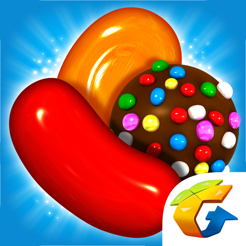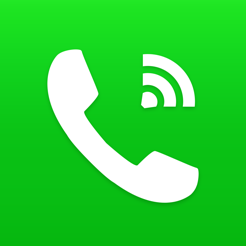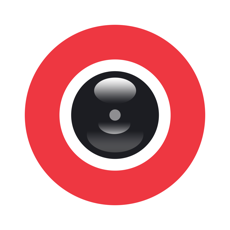人教版小学英语点读软件根据人教版教材编写,发音标准。使用时不仅能看到课本图画,而且能听到读音。实现点读功能。点到哪里读到哪里、哪里不会点哪里,并且汉语翻译到哪里。还能根据你的需要实现点读与自动朗读的随时转换。本应用供人教版小学英语三年级第二学期使用。 全文自动朗读功能、单句文字点击朗读功能。增加了目录导航功能、更多应用按钮功能。修正了一些发音错误。

SqueezePad is the preeminent controller for your Logitech Squeezebox. This smooth operating, fast and intuitive controller for your Squeezebox will provide you with complete remote control from your iPad. An upgrade allows music streaming directly to your iPad as well. An unbeatable price tag to get full control of your Squeezebox! Watch on YouTube: http://www.youtube.com/watch?v=6ZxbumV0Wao http://www.youtube.com/watch?v=kIzgUOuZtmE ◆◆◆ SqueezePad is … FAST! ◆◆◆ - instant player selection: a simple touch on the player in the top left shows an instant popup menu. Experience how fast player switching can really be. - cached menus and album art: when you browse the artist or albums menu, their content (with images) is saved. On every subsequent visit the lists are instantly available until the next rescan automatically invalidates the cache. - preloaded playlist: a big chunk of your playlist is preloaded and available on the right hand side of the screen. No waiting times when you want to take a peek at the future songs. - instant alphabetical index and smooth scrolling: the alphabetical index updates the album and artist list already when you just drag your finger over it. - shortcuts to most used functions: on the bottom bar you have buttons for artist, albums, internet radio and favorites menu. Also common playlist function have their own buttons. ◆◆◆ SqueezePad is … SMOOTH! ◆◆◆ - awesome looks: obvious when you look at the screenshots - smooth transitions and animations: As to be expected from a real iPad App, SqueezePad supports menu transitions and smooth scrolling. - volume + progress popups: when changing volume or progress of a song, you get popups telling you the actual values. So stop guessing your desired values today! - drag+drop for playlist entries: playlist entries can be reordered with drag and drop. A quick swipe shows a delete button. - screensaver mode: Tap the big cover-art and SqueezePad switches to a screensaver mode working in portrait and landscape orientation. Now you get even bigger cover art on your iPad. This makes SqueezePad a great information screen for your next party. ◆◆◆ SqueezePad has … PLAYBACK! * ◆◆◆ - stream music to your iPad: now your iPad becomes a small player on its own, and is able to stream your local music or internet radio stations. You’ll find this feature as an in app purchase in the players menu. - many supported formats: SqueezePad has native suport for mp3, FLAC, aac, alac, wav, aiff, pcm. With the help of your Squeezebox Server you can also stream OGG-files to your iPad (it will convert them automatically to either WAV or MP3). If your Squeezebox Server runs on a Windows machine, even WMA-files are supported! - gapless playback and synchronization: SqueezePad will preload the next song in the playlist, so that it will start without any delay. Also the full synchronization protocol of the Squeezeboxes are implemented. - many supported Apps: Last.FM, Deezer or WiMP are supported out of the box. Spotify works with the help of triodes plugin installed in Squeezebox-Server Rhapsody, Napster and Pandora are not working due to licensing issues issues * Please be aware that Logitech blocks direct streaming access to MySqueezebox.com. Squeezebox-Server required to use the playback feature. ◆◆◆ SqueezePad"s got … EXTRAS! ◆◆◆ So many extras - please visit my web-site to get a full descriptions: - integrated browser for fast information retrieval - playlist modification mode - configure manual server for advanced networks/remote streaming - set up your alarms - automatically wake your server with Wake On LAN - much much more ... ◆◆◆ Requirements ◆◆◆ Compatible with SqueezeBox-Server from v7.4 to v7.9, to be downloaded from http://www.mysqueezebox.com/download. Also supports direct connection to MySqueezebox.com if you don"t own a local server.
Run The Show DMX Artnet Edition is a professional intuitive DMX lightning control application for artnet devices (Compatible with Enttec devices). Dedicated to control the DMX / WIFI RTS-512 Box and Artnet devices, this application offers high performances to everyone. The application currently allows: • To control up to 512 DMX channels. • To regroup channels by type of projector from a library provided (fixtures) or create your own spotlight. • To easily create scenes, and load them with programmed transitions. • To have access to cursors at any time, and to modify saved scenes live. • To reorganize with a single gesture scenes order. • To patch channels to control any DMX address wanted • To save and duplicate shows created. • All settings are immediately saved without specific action. For more informations, please follow this link : http://www.tnfconcept.com.
PEP人教版小学英语点读软件根据人教版教材编写,发音标准。使用时不仅能看到课本图画,而且能听到读音。实现点读功能。点到哪里读到哪里、哪里不会点哪里,并且汉语翻译到哪里。还能根据你的需要实现点读与自动朗读的随时转换。本应用供人教版小学英语2014最新版六年级第二学期使用。 如果你在使用过程中有什么问题,可以直接与客服QQ:34019506进行联系。
PEP人教版小学英语点读软件根据人教版教材编写,发音标准。使用时不仅能看到课本图画,而且能听到读音。实现点读功能。点到哪里读到哪里、哪里不会点哪里,并且汉语翻译到哪里。还能根据你的需要实现点读与自动朗读的随时转换。本应用供人教版小学英语2014最新版五年级第二学期使用。 如果你在使用过程中有什么问题,可以直接与客服QQ:34019506进行联系。
See and Learn Saying Words 1 offers activities to encourage the imitation and repetition of one- and two-syllable words. It aims to help children with Down syndrome learn to say whole words clearly. See and Learn Saying Words 1 includes eight sets of words. The words in each set start with the same speech sound. The initial sounds selected for See and Learn Saying Words 1 are sounds that children usually learn to use early in typical development (b, d, m, p, y, n, w and h). The 72 target words represent a range of vowel-consonant combinations and are selected from vocabulary suitable for younger children. See and Learn Saying Words 1 is designed and supported by internationally recognized experts to meet the specific learning needs of children with Down syndrome and is consistent with current scientific understanding of the children"s needs and effective interventions. It is part of See and Learn Speech - an evidence-based teaching program designed to help children with Down syndrome to learn to talk more clearly. Children can start the activities in See and Learn Saying Words when they: • can produce at least some of the consonants b, d, m, p, y, n, w or h - for example, m, and b. • can produce simple combinations of these consonants and a vowel - for example, moo and baa. We recommend that young children practice these activities as soon as they meet these criteria. However, the activities are also suitable for older children who need additional practice to improve their speech clarity. (Note: See and Learn Saying Words 1 was previously called See and Learn Saying Words) Activities included: • Learning to Say Words – using picture prompt cards and speechreading cues to encourage first attempts at saying words • Practicing Saying Words – using sets of picture prompt cards in games to encourage more complete word production • Rehearsing Saying Words – multiple repetitions of specific words to improve the clarity and consistency of word production Features: • Evidence-based activities following key developmental steps • Clear and uncluttered screens avoid distractions and help children focus on information presented and learning goals • Focus on visual representation of concepts, reduced language and working memory demands to help children with specific learning needs • Comprehensive guide included in electronic format providing explicit, step-by-step guidance and instructions • Record forms included for printing and tracking your child"s progress Languages: • US English • UK English
See and Learn Saying Words 3 offers activities to encourage the imitation and repetition of spoken words. It aims to help children with Down syndrome learn to say whole words clearly. See and Learn Saying Words 3 includes six sets of words. The words in each set start with the same speech sound (sh, th, s, z, l, and j). The target words represent a range of vowel-consonant combinations and are selected from vocabulary suitable for younger children – following on from those taught in See and Learn Saying Words 1 and See and Learn Saying Words 2. See and Learn Saying Words 3 is designed and supported by internationally recognized experts to meet the specific learning needs of children with Down syndrome and is consistent with current scientific understanding of the children"s needs and effective interventions. It is part of See and Learn Speech - an evidence-based teaching program designed to help children with Down syndrome to learn to talk more clearly. Children can start the activities in See and Learn Saying Words 3 when they: • can produce at least some of the consonants - sh, th, s, z, l, or j • can produce simple combinations of these consonants and a vowel - for example, laa and shoe We recommend that young children practice these activities as soon as they meet these criteria. However, the activities are also suitable for older children who need additional practice to improve their speech clarity. Activities included: • Learning to Say Words – using picture prompt cards and speechreading cues to encourage first attempts at saying words • Practicing Saying Words – using sets of picture prompt cards in games to encourage more complete word production • Rehearsing Saying Words – multiple repetitions of specific words to improve the clarity and consistency of word production Features: • Evidence-based activities following key developmental steps • Clear and uncluttered screens avoid distractions and help children focus on information presented and learning goals • Focus on visual representation of concepts, reduced language and working memory demands to help children with specific learning needs • Comprehensive guide included in electronic format providing explicit, step-by-step guidance and instructions • Record forms included for printing and tracking your child"s progress Languages: • US English • UK English
See and Learn Saying Words 2 offers activities to encourage the imitation and repetition of one- and two-syllable words. It aims to help children with Down syndrome learn to say whole words clearly. See and Learn Saying Words 2 includes seven sets of words. The words in each set start with the same speech sound (c/k, ch, f, g, r, t and v). The target words represent a range of vowel-consonant combinations and are selected from vocabulary suitable for younger children. See and Learn Saying Words 2 is designed and supported by internationally recognized experts to meet the specific learning needs of children with Down syndrome and is consistent with current scientific understanding of the children"s needs and effective interventions. It is part of See and Learn Speech - an evidence-based teaching programme designed to help children with Down syndrome to learn to talk more clearly. Children can start the activities in See and Learn Saying Words 2 when they: • can produce at least some of the consonants c/k, ch, f, g, r, t and v - for example, g, and t • can produce simple combinations of these consonants and a vowel - for example, tea and key We recommend that young children practice these activities as soon as they meet these criteria. However, the activities are also suitable for older children who need additional practice to improve their speech clarity. Activities included: • Learning to Say Words – using picture prompt cards and speechreading cues to encourage first attempts at saying words • Practicing Saying Words – using sets of picture prompt cards in games to encourage more complete word production • Rehearsing Saying Words – multiple repetitions of specific words to improve the clarity and consistency of word production Features: • Evidence-based activities following key developmental steps • Clear and uncluttered screens avoid distractions and help children focus on information presented and learning goals • Focus on visual representation of concepts, reduced language and working memory demands to help children with specific learning needs • Comprehensive guide included in electronic format providing explicit, step-by-step guidance and instructions • Record forms included for printing and tracking your child"s progress Languages: • US English • UK English
See and Learn Combining Sounds offers activities designed to encourage attention, listening, and the production of early vowel-consonant combinations and simple symbolic sounds. It aims to help children with Down syndrome learn to produce consonant and vowel sounds together - an important step in learning to talk. Building on the skills taught in See and Learn Speech Sounds, See and Learn Combining Sounds can help children learn to combine sounds as they progress towards saying whole words clearly. See and Learn Combining Sounds is designed and supported by internationally recognized experts to meet the specific learning needs of children with Down syndrome and is consistent with current scientific understanding of the children"s needs and effective interventions. It is part of See and Learn Speech - an evidence-based teaching program designed to help children with Down syndrome to learn to talk more clearly. See and Learn Combining Sounds builds on the skills taught in See and Learn Speech Sounds and is suitable for use with children with Down syndrome who are beginning to say consonant sounds in imitation and in babble (from 9 to 12 months), and older children who are starting to combine sounds. Children can start the activities in See and Learn Combining Sounds when they: • Can say at least some of the consonants b, m, p, h, k, l, r, sh, t, w, z • Can say the vowels ar as in arm, ee as in knee, OO as in moon Children will learn to say sounds in different orders. If your child is able to say some of these consonants you can start working on the activities using the consonants they can say with the vowels. (Note: See and Learn Combining Sounds was previously called See and Learn Putting Sounds Together) Activities included: • Combining Consonants and Vowels - using picture prompts to practice putting two sounds together to say syllables or words • Saying Symbolic Sounds - using picture prompts to encourage putting two sounds together to say meaningful symbolic sounds Features: • Evidence-based activities following key developmental steps • Clear and uncluttered screens avoid distractions and help children focus on information presented and learning goals • Focus on visual representation of concepts, reduced language and working memory demands to help children with specific learning needs • Comprehensive guide included in electronic format providing explicit, step-by-step guidance and instructions • Record forms included for printing and tracking your child"s progress Languages: • US English • UK English
See and Learn Speech Sounds offers activities designed to encourage attention, listening, discrimination and the production of the sounds that make up speech. See and Learn Speech Sounds introduces 41 speech sounds (phonemes) in the English language with clear picture card prompts and simple activities to learn, rehearse and test discrimination skills. Later steps in the See and Learn Speech program build on these skills to combine individual sounds in simple vowel consonant combinations and then whole words. See and Learn Speech Sounds is designed and supported by internationally recognized experts to meet the specific learning needs of children with Down syndrome and is consistent with current scientific understanding of the children"s needs and effective interventions. See and Learn Speech Sounds is designed for use with babies from around six months of age and preschool children. You can use the app with children of any age above six months to practice listening, discrimination and the production of sounds. (Note: See and Learn Speech Sounds was previously called See and Learn Playing with Sounds) Activities included: • Listening to Single Sounds - this activity is designed to help children become familiar with the sounds in their language and to store these sounds in their memory system. It also teaches your child to associate each sound with a picture prompt. • Listening to Different Sounds - this activity is designed to help children hear and notice the differences between sounds (discrimination). This skill is important for speech and language development: children need to able to hear the differences between sounds to learn the meanings of similar sounding words (for example, fat, cat, sat) and to produce similar sounding words. • Selecting Different Sounds - this activity tests your child"s discrimination skills by asking them to identify a spoken sound by choosing the sound card representing the sound. • Saying Sounds - as your child learns the sounds in speech and learns to discriminate between them they are developing some of the skills necessary to begin to produce sounds spontaneously - this activity helps them to practice producing speech sounds. Features: • Evidence-based activities following developmental steps targeting foundational speech skills • Clear and uncluttered screens avoid distractions and help children focus on information presented and learning goals • Focus on visual representation of concepts, reduced language and working memory demands to meet specific learning needs • Comprehensive guide included in electronic format providing step-by-step guidance • Record forms for printing and tracking progress • Ideal for use at home or in the classroom Languages: • US English • UK English





